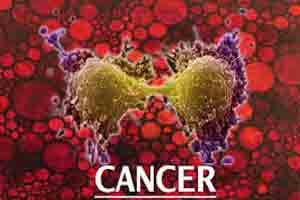- Home
- Editorial
- News
- Practice Guidelines
- Anesthesiology Guidelines
- Cancer Guidelines
- Cardiac Sciences Guidelines
- Critical Care Guidelines
- Dentistry Guidelines
- Dermatology Guidelines
- Diabetes and Endo Guidelines
- Diagnostics Guidelines
- ENT Guidelines
- Featured Practice Guidelines
- Gastroenterology Guidelines
- Geriatrics Guidelines
- Medicine Guidelines
- Nephrology Guidelines
- Neurosciences Guidelines
- Obs and Gynae Guidelines
- Ophthalmology Guidelines
- Orthopaedics Guidelines
- Paediatrics Guidelines
- Psychiatry Guidelines
- Pulmonology Guidelines
- Radiology Guidelines
- Surgery Guidelines
- Urology Guidelines
New drug hope for rare bone cancer patients

Patients with a rare bone cancer of the skull and spine -- chordoma -- could be helped by existing drugs, suggest scientists from the Wellcome Trust Sanger Institute, University College London Cancer Institute and the Royal National Orthopaedic Hospital NHS Trust. In the largest genomics study of chordoma to date, published today (12th October) in Nature Communications, scientists show that a group of chordoma patients have mutations in genes that are the target of existing drugs, known as PI3K inhibitors.
Researchers suggest a clinical trial of PI3K inhibitors for this particular group of chordoma patients, who could benefit from existing treatments.
A chordoma is a rare form of bone cancer that strikes individuals of all ages and affects 1 in every 800,000 people in the UK. Chordomas are slow-growing, yet aggressive and life-threatening tumours that form in the vertebral bodies of the spine, the sacrum and base of the skull. A cancerous tumour is considered to develop from persistent embryonic tissue, known as the notochord.
As they involve critical structures such as the brainstem, spinal cord, and important nerves and arteries, chordomas are difficult to treat. Surgery and radiation are currently the only effective forms of treatment .
For the first time, scientists have used whole genome sequencing to gain a better understanding of the biology underlying chordoma. The results reveal promising new treatment options for cancer with a poor prognosis.
The team studied chordoma tumours from 104 patients and found that 16 per cent of the tumour samples had genetic changes, or mutations, in PI3K signalling genes. These genes are the target of existing drugs, known as PI3K inhibitors, which are being used to treat many cancers, including breast cancer, lung cancer and lymphoma, but have not yet been considered for chordoma.
The gene brachyury, or T, has been known for some time to play a role in chordoma but for the first time the team used genomic sequencing to demonstrate that only one additional copy of the T gene seems to drive these tumours. The team also discovered a new cancer gene that is specific to chordoma, known as LYST, which has not been found in any other cancer. This finding warrants future research.
Dr Sam Behjati, joint first author from the Wellcome Trust Sanger Institute, said: "By sequencing the tumours' DNA, we get a much clearer view of the genetic changes that drive chordoma. We have shown that a particular group of chordoma patients could be treated with PI3K inhibitors, based on their mutations. This would have been missed had we not done genomic sequencing of their tumours."
Josh Sommer, a survivor of chordoma and Executive Director of the Chordoma Foundation, USA, said: "These findings represent a major step forward in understanding the underlying causes of chordoma, and provide hope that better treatments may soon be available for some patients."
Professor Adrienne Flanagan, joint lead author from the Royal National Orthopaedic Hospital NHS Trust and University College London Cancer Institute, said: "This study provides a resource for chordoma research for years to come. In the future we hope to target chordoma from three angles: trialling PI3K inhibitors in chordoma; developing a therapeutic approach to switching off the extra copy of the T gene and studying the function of LYST as a cancer gene and its role in the development of chordoma."
For more details click on the link : Patrick S. Tarpey, Sam Behjati, Matthew D. Young, Inigo Martincorena, Ludmil B. Alexandrov, Sarah J. Farndon, Charlotte Guzzo, Claire Hardy, Calli Latimer, Adam P. Butler, Jon W. Teague, Adam Shlien, P. Andrew Futreal, Sohrab Shah, Ali Bashashati, Farzad Jamshidi, Torsten O. Nielsen, David Huntsman, Daniel Baumhoer, Sebastian Brandner, Jay Wunder, Brendan Dickson, Patricia Cogswell, Josh Sommer, Joanna J. Phillips, M. Fernanda Amary, Roberto Tirabosco, Nischalan Pillay, Stephen Yip, Michael R. Stratton, Adrienne M. Flanagan, Peter J. Campbell. The driver landscape of sporadic chordoma. Nature Communications, 2017; 8 (1) DOI: 10.1038/s41467-017-01026-0

Disclaimer: This site is primarily intended for healthcare professionals. Any content/information on this website does not replace the advice of medical and/or health professionals and should not be construed as medical/diagnostic advice/endorsement or prescription. Use of this site is subject to our terms of use, privacy policy, advertisement policy. © 2020 Minerva Medical Treatment Pvt Ltd